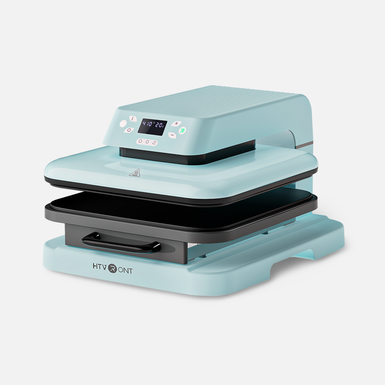Introduction
Have you ever marvelled at the vibrant, eye-catching designs adorn various products like mugs, apparel, and phone cases? Sublimation printing, a remarkable technique for producing stunning, long-lasting prints, has taken the world of custom merchandise by storm. But when incorporating white elements into sublimation prints, things can get a little tricky. This article will delve into the fascinating world of white sublimation ink and explore the innovative ways it is utilized in the printing industry.
Part 1: Is there white ink for sublimation?
Sublimation printing transfers ink from a specially coated paper onto a substrate using heat and pressure. Unlike traditional printing methods, such as inkjet or screen printing, where opaque white ink can be directly applied, sublimation inks are transparent. The reason behind this lies in the chemistry of sublimation ink.
Sublimation ink is unique because it undergoes sublimation, transforming from a solid to a gas without going through the liquid state. When heated, the ink particles directly penetrate the surface of the substrate, resulting in a durable and vibrant print. However, this process does not allow the application of opaque white ink.
The primary advantage of transparent sublimation ink is that it enables vibrant, full-colour designs on white or light-coloured substrates. The colours appear vivid and true to the original design, making sublimation printing the go-to choice for custom apparel and personalized products. However, this advantage poses a challenge when printing on darker materials.
Part 2: What is white ink used for?
White ink plays a crucial role in traditional printing, especially on dark or coloured surfaces, as it provides a base layer for other colours to sit on top, ensuring their true vibrancy. But in sublimation printing, where the ink fuses directly into the substrate, the absence of white ink poses a challenge when printing on darker materials.
For instance, if you try to sublimate a design with light colours onto a black t-shirt, the sublimation inks will not be visible since they are transparent. The dark colour of the shirt will overpower the design, rendering it practically invisible. This limitation has led to the misconception that white ink for sublimation exists.
How do I get white in sublimation printing?
While white sublimation ink per se does not exist, there are clever workarounds to achieve the appearance of white in your sublimation prints. One popular method is to use a white polyester fabric or a pre-coated white substrate. By printing your design onto such materials, the white areas of the image will remain white since the sublimation process will not affect the pre-existing colour.
Another technique involves incorporating the white elements into the design digitally. This method requires careful design planning, where you simulate the appearance of white by leaving blank spaces in the artwork that correspond to the intended white areas. During printing, the blank spaces allow the base material's colour to show through, creating the illusion of white.
However, this digital workaround may only sometimes produce satisfactory results, especially with intricate designs or photographs. In such cases, choosing the appropriate base material colour or using a white polyester coating is essential for better results.
The advent of white toner printers has also offered a viable solution for adding white to sublimation prints. White toner printers can print white onto transparent transfer papers, which can then be combined with sublimation printing to create designs on dark-coloured substrates. This hybrid technique allows for impressive results, opening up new possibilities for sublimation printing applications.












![[Starter Kit] Auto Heat Press Machine 15" x 15" 110V + Starter Kit Bundle](http://www.htvront.com/cdn/shop/files/20240425-170634_385x.jpg?v=1714036345)
![[Premium Bundle] Auto Heat Press Machine 15" x 15" 110V + 20 rolls HTV Bundle 12“x3ft + Mini 2 Heat Press Machine + Random Sublimation & HTV Bundle ≥ $180](http://www.htvront.com/cdn/shop/files/1UK_4_22c12b1b-12dd-4105-ac25-93e2faae6a8c_385x.jpg?v=1713863580)















